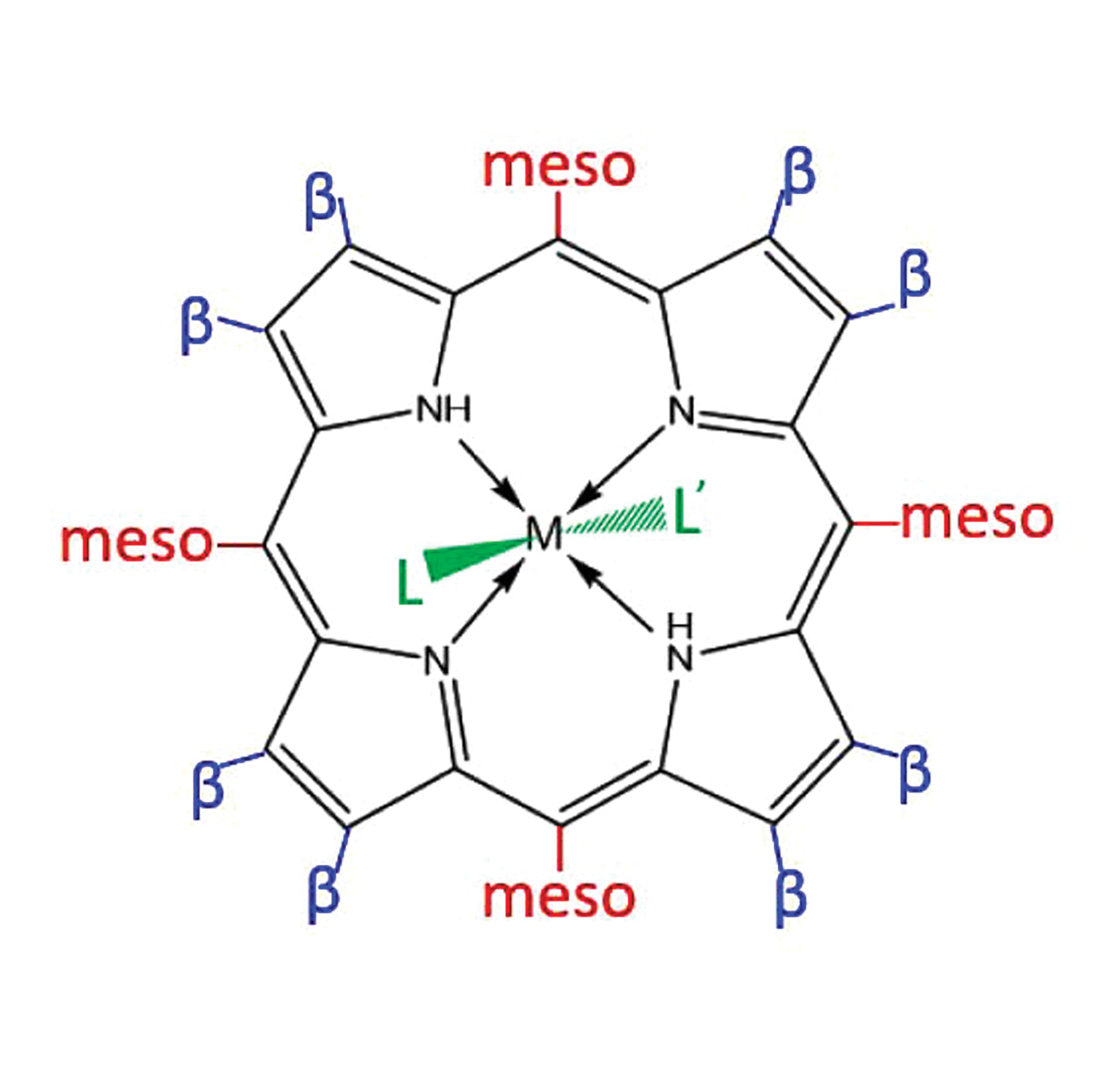Crossref Citations
This article has been cited by the following publications. This list is generated based on data provided by
Crossref.
Cruz-Navarro, J. Antonio
Hernández-García, Fabiola
Mendoza-Huizar, Luis Humberto
Salazar-Pereda, Verónica
Cobos-Murcia, J. Ángel
Colorado-Peralta, Raúl
and
Álvarez-Romero, Giaan Arturo
2021.
Recent Advances in the Use of Transition-Metal Porphyrin and Phthalocyanine Complexes as Electro-Catalyst Materials on Modified Electrodes for Electroanalytical Sensing Applications.
Solids,
Vol. 2,
Issue. 2,
p.
212.
Chen, Zhi
Zhang, Shu
Yang, Jian
Chen, Cheng
Song, Yaochen
Xu, Caili
Wu, Mengqiang
and
Liao, Jiaxuan
2021.
High loading of NiFe active sites on a melamine formaldehyde carbon-based aerogel towards efficient bi-functional electrocatalysis for water splitting.
Sustainable Energy & Fuels,
Vol. 5,
Issue. 19,
p.
4973.
Taranu, Bogdan-Ovidiu
and
Fagadar-Cosma, Eugenia
2022.
The pH Influence on the Water-Splitting Electrocatalytic Activity of Graphite Electrodes Modified with Symmetrically Substituted Metalloporphyrins.
Nanomaterials,
Vol. 12,
Issue. 21,
p.
3788.
Ahmad Lone, Ishfaq
and
Kumar, Ravi
2022.
Exploring the Electronic Influence of β‐Br Substitutions in CuTPP on Electrochemical Overall Water Splitting in Alkaline Medium.
ChemistrySelect,
Vol. 7,
Issue. 48,
Guo, Jiaqian
Zhan, Zhenxiang
Lei, Ting
and
Yin, Ping
2022.
Self-Supported FeNiP Nanosheet Arrays as a Robust Bifunctional Electrocatalyst for Water Splitting.
ACS Applied Energy Materials,
Vol. 5,
Issue. 5,
p.
5855.
Taranu, Bogdan-Ovidiu
and
Fagadar-Cosma, Eugenia
2022.
Catalytic Properties of Free-Base Porphyrin Modified Graphite Electrodes for Electrochemical Water Splitting in Alkaline Medium.
Processes,
Vol. 10,
Issue. 3,
p.
611.
Liu, Shiqi
Li, Zengyin
Tong, Huiwei
Zhong, Yong
and
Bai, Feng
2023.
Self-Assembly of Materials and Their Applications.
Kharissova, Oxana V.
Torres Martínez, Leticia M.
Luevano Hipólito, E.
Garay-Rodríguez, Luis F.
Alfaro Cruz, M.R.
and
Kharissov, Boris I.
2023.
High oxygen-yield homogeneous sonophotocatalysis for water-splitting using theraphthal.
Journal of Photochemistry and Photobiology A: Chemistry,
Vol. 437,
Issue. ,
p.
114463.
Liu, Shuanghong
Xia, Siyu
Wang, Jiefei
Ren, Xitong
Chen, Sudi
Zhong, Yong
and
Bai, Feng
2023.
Synthesis of the ZnTPyP/WO3nanorod-on-nanorod heterojunction direct Z-scheme with spatial charge separation ability for enhanced photocatalytic hydrogen generation.
Nanoscale,
Vol. 15,
Issue. 6,
p.
2871.
Taranu, Bogdan-Ovidiu
Fagadar-Cosma, Eugenia
Sfirloaga, Paula
and
Poienar, Maria
2023.
Free-Base Porphyrin Aggregates Combined with Nickel Phosphite for Enhanced Alkaline Hydrogen Evolution.
Energies,
Vol. 16,
Issue. 3,
p.
1212.
Kharissova, Oxana V.
Garay-Rodríguez, Luis F.
Luevano Hipólito, Edith
Torres Martínez, Leticia M.
and
Kharisov, Boris I.
2023.
Enhanced hydrogen generation by alcohols photoreforming using soluble cobalt phthalocyanine and ascorbic acid under ultrasonic treatment.
MRS Communications,
Vol. 13,
Issue. 6,
p.
1203.
Huynh, Thi Mien Trung
and
Phan, Thanh Hai
2024.
Covalent Molecular Anchoring of Metal-Free Porphyrin on Graphitic Surfaces toward Improved Electrocatalytic Activities in Acidic Medium.
Coatings,
Vol. 14,
Issue. 6,
p.
745.
Herrera, Facundo C.
Caraballo, Rolando M.
Vensaus, Priscila
Soler Illia, Galo J. A. A.
and
Hamer, Mariana
2024.
Fe–Ni porphyrin/mesoporous titania thin film electrodes: a bioinspired nanoarchitecture for photoelectrocatalysis.
RSC Advances,
Vol. 14,
Issue. 23,
p.
15832.
Kharissova, Oxana V.
Méndez, Yolanda Peña
Kharisov, Boris I.
Nikolaev, Aleksandr L.
Luévano-Hipólito, Edith
and
González, Lucy T.
2024.
Porphyrins, phthalocyanines, and related covalent-organic frameworks in the photochemical and electrochemical water splitting: A review.
Particuology,
Vol. 90,
Issue. ,
p.
236.
Ding, Defang
Liu, Youwen
and
Xia, Fan
2024.
Interface engineering via molecules/ions/groups for electrocatalytic water splitting.
Nano Research,
Vol. 17,
Issue. 9,
p.
7864.
Rani, Sonia
AlMasoud, Najla
Alomar, Taghrid S.
Nadeem, Muhammad
Bhatti, Moazzam H.
Munawar, Khurram Shahzad
Tariq, Muhammad
Muhammad Asif, Hafiz
and
Sohail, Muhammad
2024.
Synthesis of heterogeneous mesoporous tetrafunctionalalized porphyrin-aliphatic diamine based framework encapsulated vanadium containing POM as electrocatalyst for hydrogen and oxygen evolution reactions.
Journal of Electroanalytical Chemistry,
Vol. 967,
Issue. ,
p.
118445.
Bibi, Rubina
Nazir, Sadia
Shafiq, Shaista
Zafar, Imran
Mohany, Mohamed
Al-Rejaie, Salim S.
ul Ain, Qurat
bano, Nigarish
Rani, Sonia
Shafiq, Muhammad
and
Mouada, Hanane
2025.
A novel supramolecular Co-EDTA and Ni-anderson polyoxometalate hybrid as a high-performance electrocatalyst for alkaline water splitting.
Materials Research Bulletin,
Vol. 186,
Issue. ,
p.
113329.
